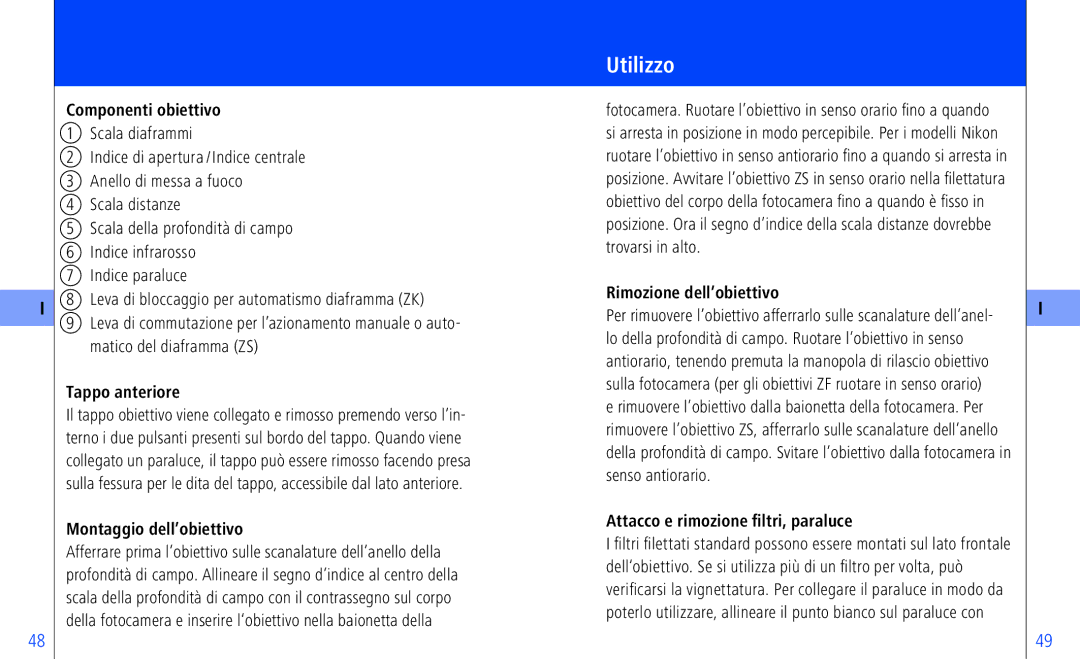ZK, ZF-, ZK-, ZS, ZS-Mount) specifications
Pentax, a storied name in the world of photography, has developed a range of lens mounts to cater to various photographic needs. Among these are the ZS-Mount, ZF-Mount, ZK-Mount, and ZS lenses, each offering unique features and technologies that enhance the shooting experience.The ZS-Mount is designed to accommodate a range of lenses with an emphasis on versatility and performance. One of the primary characteristics of the ZS-Mount is its compatibility with both full-frame and APS-C sensors, providing photographers with flexibility in their choice of camera body. This mount emphasizes quick focus mechanisms, ensuring that capturing fleeting moments becomes a seamless task. The ZS lenses incorporate advanced optical designs that are engineered to minimize distortion, chromatic aberration, and flare, delivering sharp images with stunning clarity.
Moving to the ZF-Mount, this mount is crafted with serious photographers in mind. The ZF lenses are predominantly manual focus, appealing to purists who appreciate the control that manual photography offers. These lenses feature robust metal constructions that not only enhance durability but also give a premium feel. The optical excellence of ZF lenses is evident, characterized by their ability to produce beautiful bokeh and excellent low-light performance thanks to fast maximum aperture designs. Photographers love the tactile experience provided by the smooth focusing mechanism and well-damped aperture rings.
The ZK-Mount variants, on the other hand, bring autofocus capabilities to the table without sacrificing the quality Pentax is known for. These lenses are optimized for digital sensors and often come with advanced coatings to reduce ghosting and flare when shooting in challenging light conditions. Notably, the ZK line includes a range of zoom and prime lenses, catering to different focal lengths for various photography styles, from landscapes to portraits.
All these mounts and lenses demonstrate Pentax’s commitment to optical innovation. The company incorporates weather-sealing technologies in many of its offerings, allowing photographers to venture into challenging environments without the worry of equipment failure due to the elements. This ruggedness, combined with superior optical design and build quality, sets Pentax apart in a competitive market.
In summary, the Pentax ZS-Mount, ZF-Mount, ZK-Mount, and their respective lenses represent a harmonious blend of technological advancement and thoughtful design. These mounts cater to a variety of shooting preferences and styles, making Pentax an enduring choice for photographers looking to create stunning images with precision and confidence.

